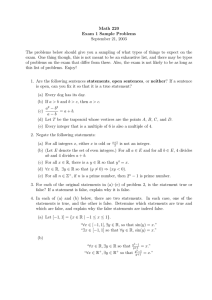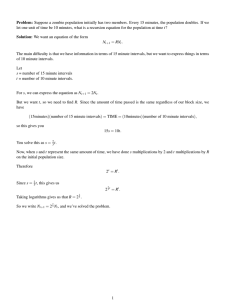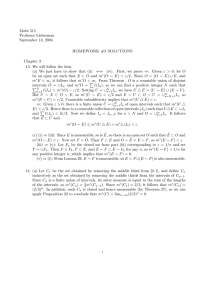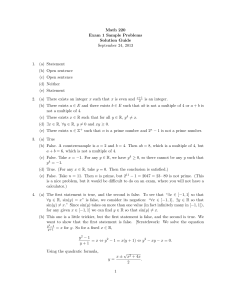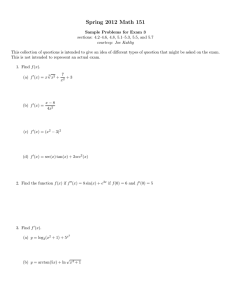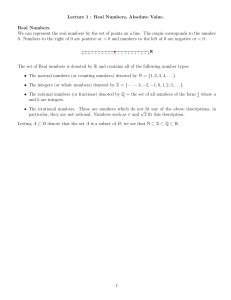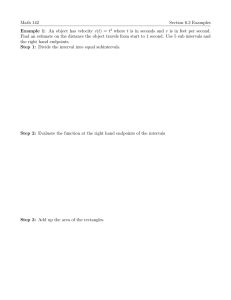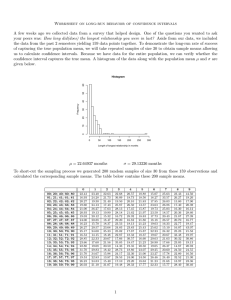Math 220 Exam 1 Sample Problems September 19, 2013
advertisement
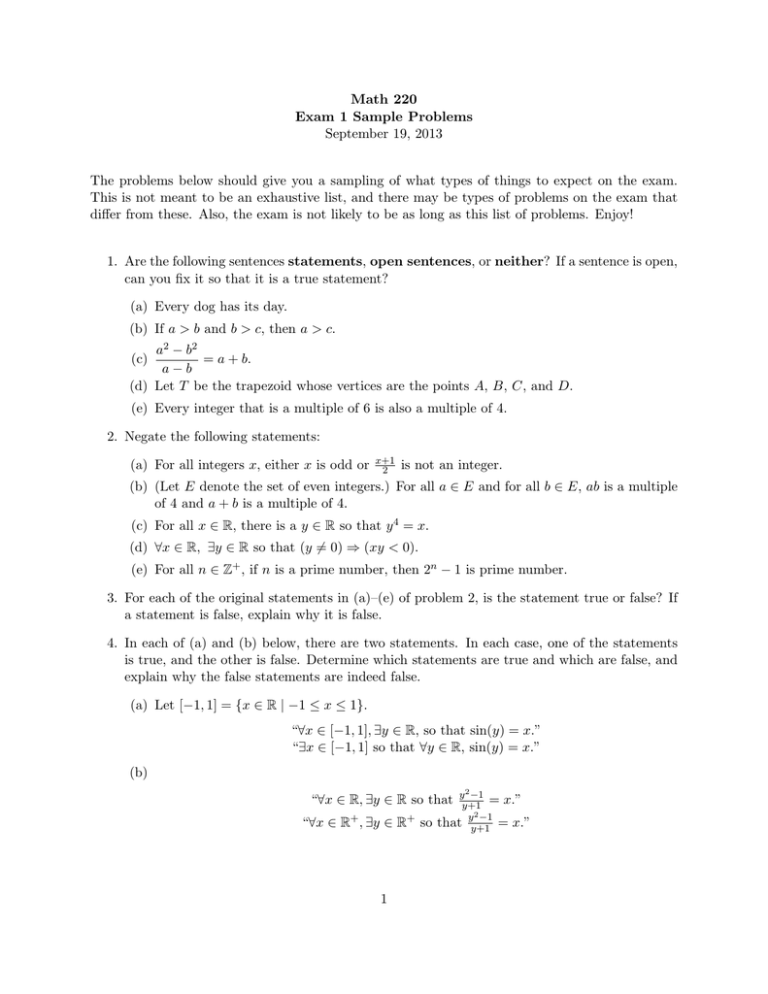
Math 220
Exam 1 Sample Problems
September 19, 2013
The problems below should give you a sampling of what types of things to expect on the exam.
This is not meant to be an exhaustive list, and there may be types of problems on the exam that
differ from these. Also, the exam is not likely to be as long as this list of problems. Enjoy!
1. Are the following sentences statements, open sentences, or neither? If a sentence is open,
can you fix it so that it is a true statement?
(a) Every dog has its day.
(b) If a > b and b > c, then a > c.
a2 − b2
= a + b.
a−b
(d) Let T be the trapezoid whose vertices are the points A, B, C, and D.
(c)
(e) Every integer that is a multiple of 6 is also a multiple of 4.
2. Negate the following statements:
(a) For all integers x, either x is odd or
x+1
2
is not an integer.
(b) (Let E denote the set of even integers.) For all a ∈ E and for all b ∈ E, ab is a multiple
of 4 and a + b is a multiple of 4.
(c) For all x ∈ R, there is a y ∈ R so that y 4 = x.
(d) ∀x ∈ R, ∃y ∈ R so that (y 6= 0) ⇒ (xy < 0).
(e) For all n ∈ Z+ , if n is a prime number, then 2n − 1 is prime number.
3. For each of the original statements in (a)–(e) of problem 2, is the statement true or false? If
a statement is false, explain why it is false.
4. In each of (a) and (b) below, there are two statements. In each case, one of the statements
is true, and the other is false. Determine which statements are true and which are false, and
explain why the false statements are indeed false.
(a) Let [−1, 1] = {x ∈ R | −1 ≤ x ≤ 1}.
“∀x ∈ [−1, 1], ∃y ∈ R, so that sin(y) = x.”
“∃x ∈ [−1, 1] so that ∀y ∈ R, sin(y) = x.”
(b)
y 2 −1
y+1 = x.”
2 −1
that yy+1
= x.”
“∀x ∈ R, ∃y ∈ R so that
“∀x ∈ R+ , ∃y ∈ R+ so
1
5. Negate the following statement forms:
(a) (P ∧ ¬Q) ∧ (¬P ∨ Q)
(b) (¬P ∧ Q) ∨ (Q ⇒ P ).
6. Construct the truth tables of the following statement forms. Are any of them tautologies or
contradictions?
(a) (P ∨ Q) ∧ (¬Q ∨ ¬R)
(b) (P ∧ ¬Q) ∨ (P ⇒ Q)
(c) [(P ∧ Q) ∧ (¬P ∨ R) ∧ (R ⇒ ¬Q)] ⇒ R
7. Simplify the following statement forms into logically equivalent forms.
(a) ¬((P ∧ Q) ∨ (P ∧ ¬R))
(b) Q ∧ (P ∨ ¬Q)
(c) ¬(∃x so that (P (x) ∧ ¬Q(x)) ∨ (P (x) ∧ R(x)))
(d) (P ⇒ Q) ∧ (R ∨ Q)
8. Let A = {x ∈ R | −1 < x − 4 ≤ 1} and B = {x ∈ R | x2 > 16}. Express the following sets as
intervals or unions of intervals.
(a) A
(b) B
(c) A ∩ B
(d) A − B
(e) A ∩ (B ∪ A)
9. Epxress the following sets as intervals or unions of intervals.
(a)
(b)
∞
[
1
i=1
∞
\
i,2
1
i,2
i=1
10. List the elements of P({0, 1, 2}) − P({2, 3}).
11. Suppose that A, B, and C are finite sets with
|A| = 10,
|B| = 8,
|C| = 14
and
|A ∩ B| = 6,
|A ∩ C| = 5,
(a) What are |A ∪ B| and |B ∪ C|?
(b) What are the possible values for |A ∪ B ∪ C|?
2
|B ∩ C| = 3.


